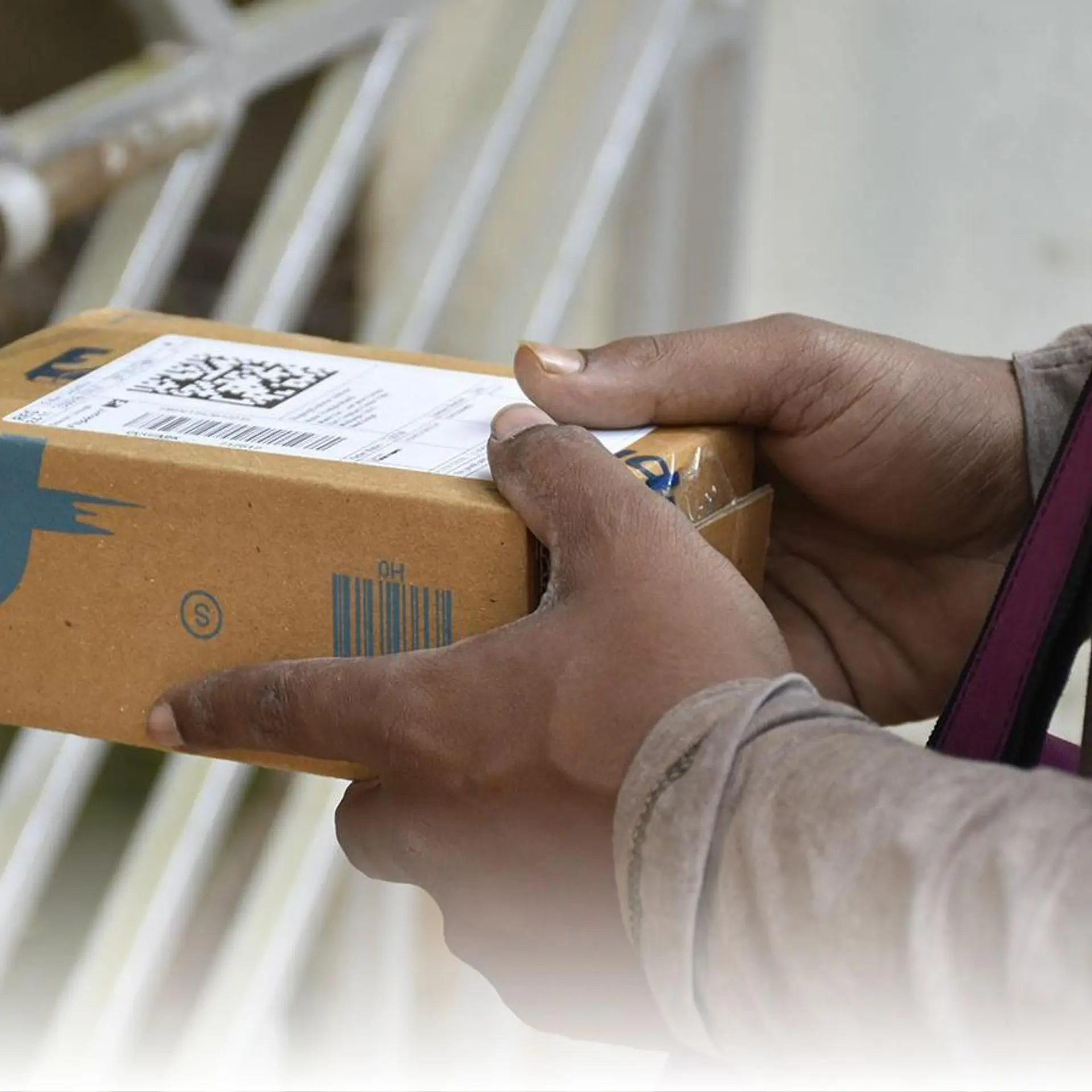As US launches $500B Stargate, India can't afford to be idle in AI race
With US tech giants pumping $500B into AI and China showing that it can produce stunning results at a fraction of the cost, experts warn India must act swiftly or risk becoming a laggard in the new digital world order
Not all wars are fought on the battlefield. These days, the race for global dominance most often runs through endless rows of servers, where artificial intelligence (AI) could end up determining which nation leads the future—or gets left behind.
Last Tuesday, US President Donald Trump fired what might be the most expensive shot in this new cold war: Stargate, a $500 billion venture that makes even Silicon Valley's boldest bets look timid. The project, which began with a $100-billion investment from tech giants SoftBank, OpenAI, Oracle, and Abu Dhabi's MGX, with the remaining to be raised over the next four years, signals America's determination to maintain its AI supremacy. This investment is among Silicon Valley's heftiest bets on a single technology, and will potentially tighten the grip of Big Tech on the US economy.
The timing was prescient. In the next few days, the world got a taste of China's engineering prowess and capability in AI with DeepSeek, which achieved sophisticated language capabilities like that of ChatGPT at a fraction of the cost. This demonstrated how quickly the AI landscape can shift. For India, the message is clear: adapt now or risk permanent technological dependence.
Despite being a key US ally, India was excluded from the list of 18 nations granted free access to advanced AI chips. These restrictions, introduced under former US President Joe Biden, create a chokehold on critical AI components like Graphics Processing Units (GPUs) and Tensor Processing Units (TPUs)—the very building blocks of AI supremacy.
"This shows serious intent to take strong control of AI," warns Dr Ajai Chowdhry, Founder of HCL and chairman of EPIC Foundation & MGB, National Quantum Mission of India. "We seem to be getting to 'weaponisation of tech'. For strategic autonomy, we must create our own AI doctrine and start controlling our own data strongly. Also, we must create our own domestic hardware for data centres as it's going to be very difficult to control our data. The government and the industry must work together to create the strategy for AI. What was thought of yesterday is no longer valid. It should be treated as an emergency!"
A beginning, but more needs to be done
Last year, India launched the IndiaAI Mission with Rs 10,371.92 crore allocated over five years, with the promise of installing 10,000 specialised AI processors through public-private partnerships.
While the initiative seemed ambitious then—with AI estimated to contribute $1 trillion to India's GDP by 2027 and create over 30 million jobs—Stargate's announcement makes it look like a drop in the digital ocean.
"For countries like India, which are constrained by limited budgets, this raises critical questions about equitable access to advanced AI infrastructure," says Jameela Sahiba, Senior Programme Manager-AI at The Dialogue, a public policy think-tank. "While Digital Public Infrastructure can offer a scalable foundation for AI innovation, the lack of ultra-high compute capacity may limit the ability to compete in frontier AI research."
Compute capacity refers to the amount of computational power a system, server, or network can provide to perform tasks, process data, or run applications.
Piyush Somani, Chairman and Managing Director, ESDS Software Solution Limited, adds that the next 5 years will serve as an inflection point in India’s AI journey.
“The project signals a massive leap toward AI dominance in the world and highlights the crucial need for nations aspiring to lead in technology. With AI estimated to contribute $1 trillion to India’s GDP by 2027 and create over 30 million jobs, now is the time to invest in sovereign AI infrastructure,” says Somani.
Leveraging engineering talent
While geopolitical tensions remain, the $500-billion project also presents opportunities for India to leverage its homegrown talent, says Ashok Chandak, President of IESA (India Electronics and Semiconductor Association).
“Many companies supporting this initiative—such as Nvidia, Arm, Microsoft, Softbank, Oracle, and OpenAI—already have a significant presence in India and actively utilise Indian talent. This creates avenues for Indian professionals to gain exposure and contribute to such a monumental project, further enhancing their expertise in advanced AI technologies,” he says.
However, when it comes to AI training, the education sector still faces numerous challenges. According to Chitranshu Wagh, Executive Head at E-Cell IIT Madras, the challenge lies in bridging the gap between theoretical knowledge and practical applications, with courses often lagging behind in industry standards.
“The real challenge is when we don’t learn how to apply what we’ve been taught. Many courses are focused heavily on scientific principles, but they often fall short on practical applications, especially given how quickly technology evolves. We end up learning concepts that were cutting-edge four or five years ago, which is not unusual,” explains Wagh.
The key policy action needed, Wagh believes, is for the government to invest heavily in vocational courses that address emerging trends.
The AI arms race
IESA's Chandak points out that restricted access to top-tier AI hardware—with India being excluded from America's list of nations granted access to advanced AI chips—could slow innovation and inflate costs for homegrown startups.
“India’s AI sector could face several hurdles due to these restrictions. Restricted access to advanced AI chips may slow innovation and development and scaling up of installations. Second, licensing requirements could raise costs and introduce delays due to authorisations. Indian companies may rely heavily on global corporations for AI infrastructure, such as data centres,” he says.
He adds that many major firms have expressed concerns over the “Export Control of AI Diffusion/Chips" policy introduced by the Biden administration.
“There is cautious optimism that the Trump administration might consider industry feedback during the 120-day review period and adopt a more relaxed stance on AI export controls, especially towards India and other strategic partners,” he predicts.
What India can do
India's efforts to become part of the global AI supply chains faces a few key obstacles. These arise mainly due to resource limitations, especially in computing power and the development of large-scale models.
“To navigate this, developing countries like India must prioritise multilateral collaborations, invest in regional compute ecosystems, and advocate for global frameworks that democratise access to AI resources,” says Jameela.
Somani adds that it’s imperative for India to focus on building indigenous AI platforms that prioritise Indian intellectual property and ramp up investments in AI R&D across sectors like IT, agriculture, smart cities, education, and renewable energy.
“To achieve this, India must prioritise public-private collaborations and ensure integration of AI in government initiatives like Digital India and Make in India. We need to build high-performance computing infrastructure to support large-scale AI models and research, and implement strong framework and data governance policies, ensuring that AI is developed and deployed at large scale,” he says.
While in the short term, the new export controls introduced by Biden may not significantly impact India, the uncertainty of securing licenses and trade negotiations could challenge India’s ambitions for large-scale AI hardware deployment.
“Amid growing concerns from technology industries, the global AI landscape may witness a shift, impacting both US technological leadership and India’s growth trajectory in AI infrastructure. Though, in the short term, India may not have a major impact, in the long run scaling up by any Indian conglomerate could face the hurdles of quantity cap,” Chandak says.
He further suggests India can accelerate its AI ambitions by deepening partnerships—leveraging frameworks like ICET (Initiative on Critical and Emerging Technologies) and IPEF (Indo-Pacific Economic Framework)—and by co-developing cutting-edge technologies or scaling its domestic capabilities.
“India must build a robust, homegrown AI infrastructure that is energy-efficient, sustainable, and accessible. This includes developing indigenous AI models, investing in edge computing, and promoting responsible AI practices focused on minimising resource consumption,” says Ankush Sabharwal, Founder & CEO of CoRover.
Without robust data readiness, even the most advanced AI infrastructure may falter, warns Pawan Prabhat, Co-Founder of Shorthills AI.
“The IndiaAI Mission is ambitious, but its focus on infrastructure and startups misses the elephant in the room: India’s fragmented unstructured data. It’s akin to assembling datasets without the right algorithms to make them work.”
Rajesh Ganesan, President, ManageEngine Zoho Corp, says AI is becoming a matter of national importance.
“This calls for a solid foundation backed by a capable, reliable infrastructure, much like the energy and transportation infrastructure. Considering the speed of AI adoption,the increasing need for GPUs and the resulting rise in energy usage require businesses and the government to work together to establish sustainable practices that harmonize innovation with environmental priorities,” he said.
Thiyagarajan Maruthavanan, Managing Partner, Upekkha, says that building platforms or large language models may not allow an Indian founder to compete globally.
“The money that few players have raised is actually little. So when you compete a platform layer in India or anywhere, you need to have a lot of government support. Whether the allocated budget of Rs 10,000 crore and the acquisition of GPUs will be enough for success is uncertain. However, the government's AI policies will heavily influence the outcome," he stresses.
Edited by Jyoti Narayan and Jarshad NK










